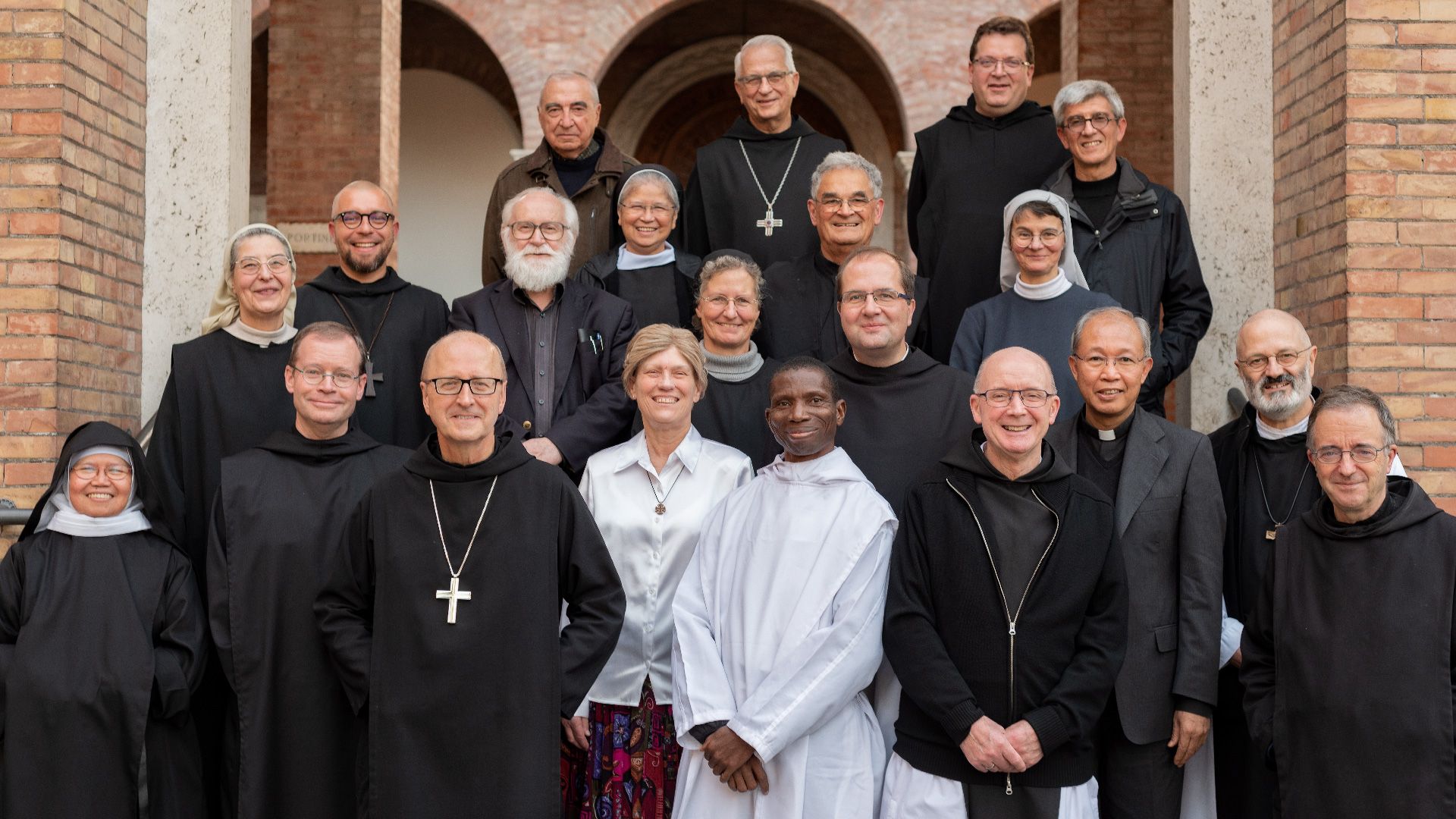The Annual Council Meeting of the Alliance for International Monasticism (AIM)
The Abbot Primate, two Abbots General, the leader of all Benedictine Women (Communio Internationalis Benedictinarum, or CIB), three abbots president, more abbots, prioresses, brothers and sisters, and a French layman: This is the Council of the Alliance for International Monasticism. The Alliance has its head office in Paris. It raises funds to promote formation and projects for monastic communities in Africa, Latin America, Asia and Eastern Europe.
The Council is the only body that brings together all these monastic leaders. While its primary task is to supervise the work of AIM, the Council also provides a great platform for discussing matters of common interest among all Benedictines, Cistercians and Trappists. In 2018, the Council met for the first time in Rome, in the Benedictine headquarters of Sant’Anselmo from 13-15 November.
The main discussion focused on Cor Orans – literally translated as “Praying Heart” – a Vatican document regarding the monasteries of cloistered nuns. It came out last May and requires major adaptations in the life and organization of monastic women. The CIB – the overarching organization of Benedictine women – shared its reflections on the document, highlighting the positive encouragements that it brings, but also pointing out significant concerns. In particular, the requirement for a mandatory nine-year period of initial formation (instead of the current five to six years) raises many worries, not the least because no such demand is placed on men. Father Stefano Canuto OSA, a member of the Vatican Congregation for Religious, attended the Council meeting to explain and defend the document. The monastic orders are now pondering whether to formulate some insights about the application of the document in those houses whose life is based on the Rule of Saint Benedict.
The ordinary work of AIM was given its fair share of attention: reports of activities and finances, projects and central administration all were discussed and approved. Examples of successful projects were shared, e.g., a tractor for nuns in Nigeria and many formation programs. A watershed moment came when Monsieur de Miribel gave the financial report. He has done this work on a voluntary basis for 38 years and now is retiring from AIM. In a greatly reflective speech, he highlighted significant moments in the history of AIM. During its early days, then-President Abbot Emeritus De Floris sold his abbatial ring to raise funds for a poor monastery in Africa. Monsieur de Miribel’s faithfulness and unbending accuracy have been a great contribution to the life of the Alliance and reminded the participants once again of the important role that lay people so often have in our monastic activities.


